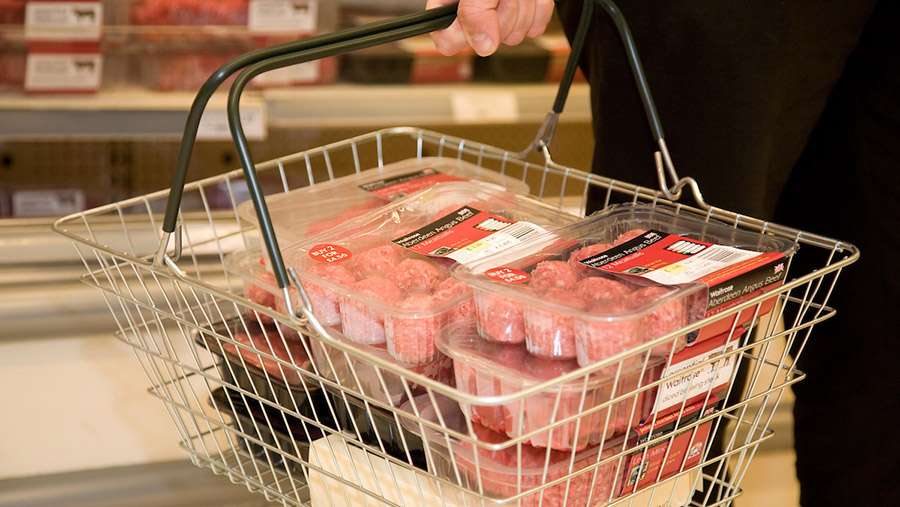Second lockdown impact on meat sector less dramatic – AHDB
 © Tim Scrivener
© Tim Scrivener The UK’s second Covid-19 lockdown should not have the same dramatic effect on red meat markets as the one imposed in March, the AHDB has said.
The latest lockdown began on 5 November with a plan to lift restrictions on 2 December.
Panic buying and a collapse of the foodservice sector are less likely to occur this time around, AHDB lead analyst Duncan Wyatt said.
See also: Coronavirus: 5 tips for recruiting new farm staff
He cited a number of reasons for the difference:
- Consumers have a greater confidence that the food supply chain can operate effectively
- Food service businesses are better prepared, offering takeaways and delivery services
- Larger takeaway chains are predicting uninterrupted service
- The foodservice sector has not yet rebuilt to full capacity so has less volume to lose
- Retail volumes are already raised so the effect of increased sales will be limited
- Schools remain open, freeing up workers in the food processing and supply chain.
However, Mr Wyatt said there were still significant issues surrounding the timing of this second lockdown phase.
“The supply chain would already have been gearing up for Christmas.
“As a result, there may be less available cold storage than in March to provide flexibility if a mismatch in supply and demand occurs.
“Any pre-Brexit stockpiling in the supply chain may also exacerbate this problem,” he added.
Large social events will also be curtailed ahead of the festive season, where the foodservice sector would normally be operating at full capacity.
Sector-by-sector breakdown
Beef
Over the 24 weeks ending 9 August, retail sales volumes of beef increased by 48,000t.
This represented an uplift of 18% year-on-year, well above the average 14% rise across the total food and non-alcoholic drink sector.
Carcass balance was an issue in the first lockdown.
Consumers prioritised mince while other, more expensive parts of the carcass, such as steak, saw a slump in sales.
Since then, industry promotional campaigns have proved successful in stimulating demand and steaks are cheaper than before the first lockdown, Mr Wyatt said.
Another positive for the beef sector is the expectation that some large burger chains will continue to provide uninterrupted takeaway services.
Under the spring lockdown, these outlets were lost in the first few months.
However, while the overall impact on beef is predicted to be lighter, the sector is vulnerable to a slowdown in the continental foodservice market.
This may affect exports in the short term, Mr Wyatt warned.
Lamb
In the 24 weeks ending 9 August, retail sales volumes of lamb rose by just 1% year-on-year.
The relatively small increase compared to beef was due to the loss of the Easter market – an important time for lamb consumption.
More recently, there has been a larger rise in retail lamb purchases, with sales by volume in the 12 weeks to 4 October up 11% compared with the same period last year.
In this next phase, the continuation of the takeaway market is an important boost for lamb production.
Lamb performs relatively well in the takeaway sector, with kebab shops and Asian restaurants key outlets.
However, lamb is vulnerable to lockdown in France and exports may be affected in the short term.
Pork
Pork sales were up 13% by a total of 57,000t in the 24 weeks ending 9 August.
African swine fever and the impact on prices of an oversupply across the EU is a greater concern than the coronavirus lockdown at this stage.
That said, imports would be expected to decline again, as foodservice volumes fall, Mr Wyatt said.
But Mr Wyatt suggested pork processing capacity could be challenged if a second wave of Covid-19 causes staff shortages.

